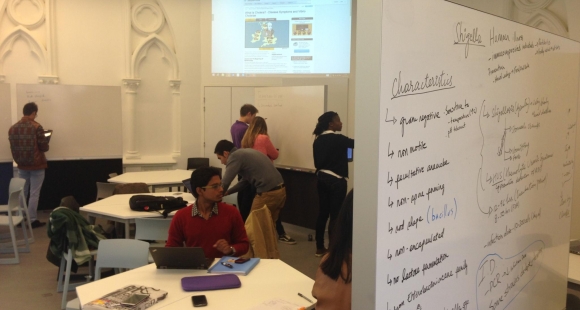
To what extent do spaces and their layout impact learning?
Research shows that the space, setting and environment all have a significant impact on pedagogical practice. For instance, if the teacher has a low-quality video projector and no curtain to make the room dark, they can’t use the projector. The environment determines the practice. Similarly, on campuses built in the 1970s with railroad-style classrooms where you can’t move the tables and chairs, there’s no freedom of movement. The environment constrains and restricts pedagogical practice. Research shows that an open, modular space is necessary to foster mobility and creativity.
Which trends have you observed in higher education?
The two key words are flexibility and modularity. Some schools have opted for smaller lecture halls with 150 seats rather than the traditional 700 seats. Increasingly, other spaces are being used as well, such as aisles. A 700-person lecture hall requires aisles that are big enough to evacuate everyone. How can we use them intelligently?
Another important consideration is comfort: for example, having high-quality acoustics in the lecture hall so you can hear well or high-quality lighting so you can see the board. Both are key to students’ ability to learn.
You compare these changes with changes made in the hospital industry. Why?
Hospitals went through a similar evolution 20 years ago. They had to find a new business model and accommodate new technologies that changed everything. Now there are the same prerogatives in education. As with the hospital industry, we need to design modular structures while taking into account available resources.
There are many experiments going on but have you actually seen these changes spread?
We’ve seen a growing number of modular space experiments, such as putting rolling chairs in a few classrooms. Yet these experiments have been limited because the equipment is expensive. They are generally the initiative of a person or team that is aware of the issues. Even in the [French government initiative] “Plan Campus,” which covers entire campuses, little thought is given to the connections between learning and learning spaces.
Read the full article (in French)






